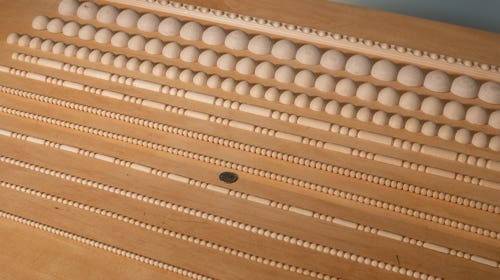Letters to the Editor: Reader response continues to Ryobi table saw verdict
If I worked for Ryobi, the attorneys would have forced the owner of SawStop to prove it works. Everyone knows that hot dogs are not the same density as fingers…
If I worked for Ryobi, the attorneys would have forced the owner of SawStop to prove it works. Everyone knows that hot dogs are not the same density as fingers with bones. I would have brought a SawStop saw into the courtroom and asked the owner to stick his finger into the saw and prove to the jurors that his invention works as stated.
{loadposition position10}
The old saying goes: "You can make anything foolproof, but not idiot-proof". Everyone knows you must learn how to operate products before you use them.
Rick Bertrand
Orange, Texas
Editor's note: The inventor, Stephen Gass, has demonstrated SawStop's technology by stopping the blade with his finger on at least two occasions, most recently for the Time Warp television show. The video is on the Internet and can be found with a Google search for "SawStop finger video."
My safety should be a priority
When I heard about the ruling, I was so glad to hear that a jury was going to hold Ryobi accountable. Not because I think the man who injured himself wasn't, without a doubt, solely to blame for his actions, but because of what it means for the tool industry.
I'm 28, work at a custom furniture shop and plan to be woodworking for many years to come, so I'm heartened to know that we're one step closer to requiring saw manufacturers to incorporate the SawStop technology. As far as I'm concerned, they shouldn't even make table saws without it, now that we know how successful it is. Yes, the saws will be more expensive. I'll gladly pay the extra money to have that extra security and apparently so would most woodworkers because, from what I've heard, SawStop is outselling every other table saw on the market.
Yes, we all have to be responsible for our own safety, but Ryobi had the chance to incorporate this new technology into their saws and turned it down. That says to me that my safety is not a priority to them and I, for one, wouldn't buy tools from a company that was doing anything less than everything in their power to make their tools as safe as possible.
I agree that this guy who injured himself has only himself to blame. There will always be people like him and they will always find ways to hurt themselves in new and interesting ways. Nonetheless, the closer we get to making these and other innovative safety technologies standard on the tools of our trade, the better off we all will be.
Erik Riesenberg
Minneapolis
A shortsighted view
I wanted to write in and respond to the letter you received from Ray Goudreau from Bright Water Ltd. (Page 9, August 2010 issue). In his letter, Mr. Goudreau lambasts the design and concept behind the SawStop. He specifically didn't like that, when initiated, the safety mechanism destroys itself and the blade citing a possible stop in production should you not have a spare of either on hand. Being a professional cabinetmaker of 12-and-a-half years, I cannot think of a more shortsighted view.
What decent shop owner would not keep a spare blade on hand just for convenience of always having a blade available when the other is out for sharpening? What SawStop owner doesn't own a spare cartridge?
It is quite clear Mr. Goudreau has never had the unfortunate experience of running his finger through a saw blade or had an employee miss hours of work (possibly weeks) because of such an accident. It is also evident he has never received a bill for such an emergency room visit (minimum $1,000) to be able to compare it to the relatively low cost of the SawStop ($3,500 to $4,500), the replacement blades ($60 for cheap blades), cartridges (also $60) necessary to keep on hand, lost revenue because of lost production time and increased workers' compensation premium.
I've worked for many shop owners like Mr. Goudreau that not only put production ahead of the health and safety of their employees, but can't recognize that a high upfront cost will save them money in the long run.
I own a SawStop for my home shop and love it. It is the most intelligently designed saw that I have ever used and I can't say enough about it.
Andrew Kelsey
By e-mail
It's not that complicated
In almost every magazine I read, I look for the letters to the editor and read them first. I have been interested in following those related to the $1.5 million judgment against Ryobi. For the most part, I am in agreement with those whose opinions you have chosen to publish.
However, the one written by Ray Goudreau makes me bristle a bit. I'm not challenging his qualifications, but rather his conclusions. First of all, the "dismantling" of the saw is not required to change the module when it has been activated. The procedure is no more complicated than changing the blade and takes perhaps 20 minutes.
Secondly, a thorough examination of the blade (assuming carbide teeth) has showed minimal damage in the few occasions when our modules have detected contact with skin, embedded metal, etc. Since we have perhaps 20 new/resharpened blades on hand, we routinely replace the blade even when blade damage cannot be seen.
My workshop has been described as "a home workshop on steroids," and I keep both replacement modules and blades on hand. It is rather difficult to imagine that a production shop would not maintain similar spares.
I also take issue with the opinion that the shop downtime when the safety device has been activated takes precedent over the downtime that occurs when a body part has been damaged or removed from a person. And there have been those latter occasions prior to my investment in the SawStop table saw. My son severely cut into the tip of his left-hand ring finger prior to the installation of the SawStop machine. There was the initial visit to the emergency room and subsequent hospital visits leading to the removal of a portion of the fingernail root as a result. He often has stated he would easily give a thousand dollars for that to never have happened. Another person received a nick on his thumb that didn't even draw blood when the SawStop technology worked exactly as designed.
Mr. Goudreau's suggestion that the SawStop's design causes "catastrophic" damage is quite overstated, especially when contrasted with the truly catastrophic results of bodily injuries. My own feeling is if the technology exists and I have the financial resources to afford it, it is a moral failure not to equip my shop with the machine.
Ken Pannabecker
Los Gatos, Calif.
The employer's responsibility
One perspective that has been overlooked in your letters column has been the responsibility of the employer in this case. The employer has a responsibility to provide a safe workplace under the general-duty clause of the OSHA Act of 1970. They are required to provide safe tools, training and supervision, which are all missing in this case. They obviously did a minimal-to-poor job training this worker to use the provided tools and did not provide effective supervision to ensure that he used them properly. They provided him with a tool that was either lacking in the required guards or was allowed to be changed into an unsafe configuration. They did not supervise him to ensure that the tools were in a safe condition or used in a safe manner.
I also agree with many other correspondents that the employee has some responsibilities to exercise due care and diligence. Forcing a piece of wood through a table saw is an action likely to get one placed on the Darwin Awards for the current year. With regard to the SawStop, I recall the quotation that "anytime that you develop an idiot-proof device, they come up with a better class of idiot."
Joe Barry
By e-mail
This article originally appeared in the September 2010 issue.







